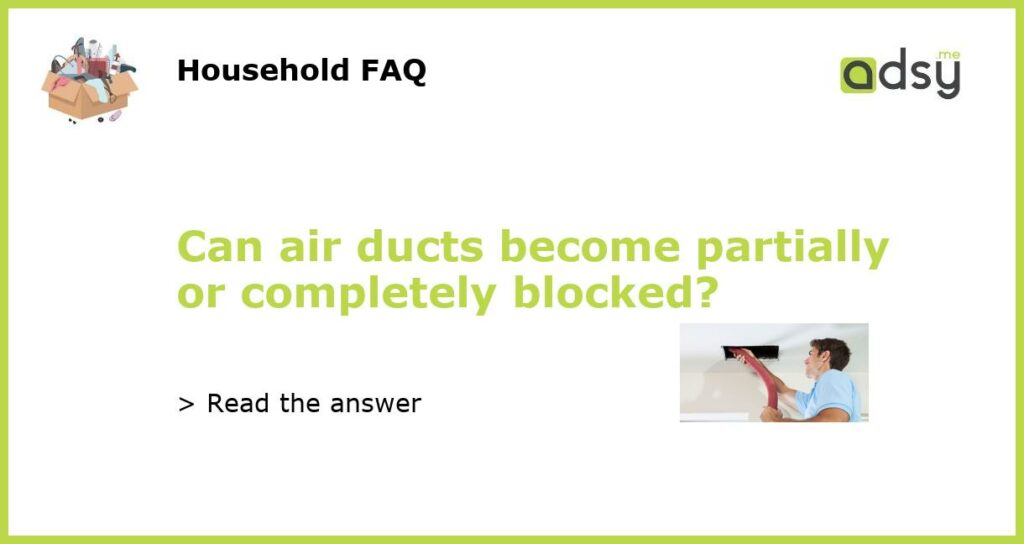Yes, air ducts can become partially or completely blocked
Air ducts are important components of HVAC (heating, ventilation, and air conditioning) systems. They are responsible for distributing heated or cooled air throughout a building. However, over time, air ducts can become partially or completely blocked due to various reasons.
What causes air duct blockage?
There are several factors that can contribute to air duct blockage. One common cause is the accumulation of dust and debris. As air flows through the ducts, it can pick up particles such as pet hair, dirt, and pollen. These particles can then settle and build up inside the ducts, eventually leading to blockages.
Another cause of air duct blockage is the presence of mold and mildew. If there is excess moisture in the ductwork, it can create a favorable environment for mold and mildew to grow. This can not only block the air ducts but also pose a health risk to the occupants of the building.
In addition, air ducts can become blocked due to physical obstructions. For example, if furniture or other objects are placed too close to a vent, it can restrict the airflow and lead to blockages. Similarly, if the ductwork is damaged or collapsed, it can impede the flow of air and cause blockages.
Why is air duct blockage a problem?
Air duct blockage can have several negative consequences. Firstly, it can reduce the efficiency of the HVAC system. When air ducts are blocked, the air cannot flow freely, which means that it takes longer to heat or cool a space. This can result in higher energy bills and a less comfortable indoor environment.
Secondly, air duct blockage can lead to poor indoor air quality. When dust, debris, and other pollutants accumulate in the ducts, they can be circulated throughout the building every time the HVAC system is turned on. This can cause respiratory issues, allergies, and other health problems, especially for those with pre-existing conditions.
Lastly, air duct blockage can increase the risk of HVAC system breakdowns. When the airflow is restricted, the HVAC system has to work harder to maintain the desired temperature. This puts unnecessary strain on the system, leading to increased wear and tear. Over time, this can result in costly repairs or even the need for a complete system replacement.
How to prevent and resolve air duct blockage?
Preventing air duct blockage starts with regular maintenance. It is recommended to have the ductwork inspected and cleaned by a professional HVAC technician at least once every 2-3 years. This will help remove any accumulated dust, debris, and mold, ensuring that the air can flow freely through the ducts.
In addition to professional cleaning, there are also some steps that can be taken to prevent blockage. For example, regularly changing air filters can help prevent the buildup of dust and debris in the ducts. It is also important to keep vents and registers clean and free from any obstructions.
If air duct blockage is already present, it is advisable to seek professional help. A trained technician can identify the cause of the blockage and take appropriate measures to resolve it. This may involve cleaning the ductwork, repairing any damaged sections, or installing additional measures such as UV lights to prevent mold growth.
In conclusion, air ducts can indeed become partially or completely blocked. This can occur due to the accumulation of dust and debris, the presence of mold and mildew, or physical obstructions. Air duct blockage can have negative consequences such as reduced HVAC system efficiency, poor indoor air quality, and increased risk of system breakdowns. However, regular maintenance and professional cleaning can help prevent and resolve air duct blockage, ensuring the efficient and healthy operation of HVAC systems.

